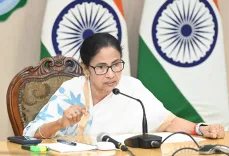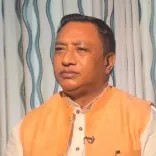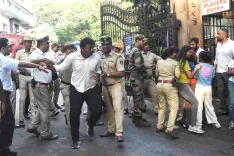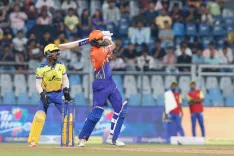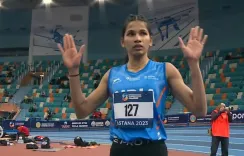How Will Maharashtra Overcome Its Water Crisis Through River-Linking Projects and Conservation Efforts?

Synopsis
In a bold move to tackle Maharashtra's water issues, CM Devendra Fadnavis outlines a comprehensive strategy that includes river-linking and conservation projects. This approach aims to redirect water resources to drought-stricken areas, promising a sustainable solution to the state's ongoing water crisis.
Key Takeaways
- Integrated water management is essential for solving Maharashtra's crisis.
- The Nalganga-Wainganga river-linking project will aid drought-affected areas.
- Public participation has significantly funded conservation efforts.
- Advanced technologies like drip irrigation are crucial for sustainability.
- Addressing urban pollution is essential for maintaining river health.
Nagpur, June 7 (NationPress) Chief Minister Devendra Fadnavis announced on Saturday that addressing Maharashtra's water crisis requires a comprehensive strategy that integrates large dam projects with initiatives focused on river-linking, water conservation, groundwater recharge, and the reuse of water, alongside various small to medium-scale projects.
“In this regard, we aim to redirect 54 TMC of water that currently flows into the sea via westward rivers to the Godavari basin. Additionally, the Nalganga-Wainganga river-linking project will channel water to the drought-prone regions of Vidarbha. In the Tapi basin, we plan to retain 35 TMC of water that otherwise flows into the sea through Gujarat. These initiatives are crucial for making Maharashtra a state that has successfully overcome water scarcity and drought challenges,” he stated.
He made these comments at the launch of the three-day Vidarbha Water Conference.
“Both Vidarbha and Marathwada have faced significant irrigation shortfalls. This water scarcity has hindered irrigation projects, leaving farmers without the necessary resources for cultivation. This ongoing issue has led to an increase in farmer suicides, especially in Vidarbha. To break this cycle, we prioritized effective water management. Since taking office in 2014, we have launched the Baliraja Scheme, which has seen the implementation of 90 projects.
“We also focused on water conservation through the Jalyukt Shivar scheme. By integrating several governmental initiatives and appointing district collectors to lead these efforts, we initiated a large-scale public movement. Through this collective effort, citizens raised approximately Rs 700 crore for water conservation, leading to significant improvements in around 20,000 villages,” the Chief Minister explained.
CM Fadnavis further highlighted that regions with water shortages face distinct challenges, while those with abundant water encounter different issues.
“In areas where water usage is excessive, fertile lands are becoming saline and unsuitable for agriculture. The Tapi basin is particularly affected by salinization. To combat this, we must transition from open canal systems to piped water delivery and adopt advanced technologies like drip irrigation. These methods are essential for sustainability,” he noted.
“Recently, we signed an agreement with Madhya Pradesh for the Tapi Recharge project, which will help mitigate soil salinization in areas like Buldhana, Akola, and Washim. This project is expected to greatly enhance water availability for agriculture. The Wainganga-Nalganga River Linking Project aims to establish a 500 km river network throughout Vidarbha. We have also nearly completed the longstanding Gosikhurd Project, which will significantly bolster water supply,” Fadnavis added.
Recognizing the value of water, he urged for its careful usage, noting that industrial pollution in rivers is less critical than pollution stemming from urbanization. To tackle river pollution, he stressed the necessity of treating urban wastewater before its discharge into rivers.
CM Fadnavis stated that the three-day conference will address various issues and include expert presentations. In addition to identifying problems, the conference aims to develop actionable policy recommendations. Solutions based on public participation will be more sustainable in tackling water challenges, he concluded.


